| |
|
The Institute of
East Asian Studies (IEAS), Thammasat University under the
patronage of Her Royal Highness Princess Mahachakri
Sirindhorn was initially established as the Japanese Studies
Group within Thammasat University in 1981 Two years later in
1983, the University decided to upgrade the Japanese Studies
Group to the Institute of Japanese Studies with a status of
a division attached directly to the Office of the Rector of
Thammasat University. The Ministry of University Affairs was
granted, on December 20, 1983, with the advice that the
scope of the studies be extended beyond Japan to cover other
countries in the East Asian region as well. The Institute of
Japanese Studies would henceforth be recognised as the
Institute of East Asian Studies, comprising programs for
Japanese, Korean and Chinese studies. The establishment of
the Institute of East Asian Institute was announced in the
Government Gazette as required by law on April 11, 1984. |
| |
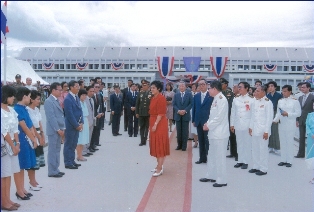 |
| |
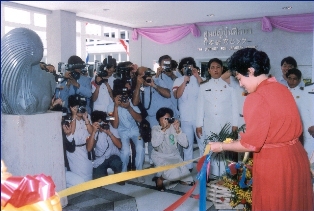 |
| |
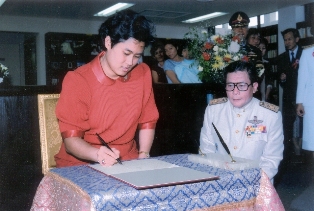 |
| |
|
The
above activities continue during the Second Phase of the Japan
Foundation Support (1991-1995). During this second phase, several
additional programs or activities have been included such as the
organization of the annual conferences into national and
international categories, the training of the provincial high school
teachers on Japanese studies, the invitation of researchers from
neighbouring countries to Thailand to study the role of Japan in the
development of Thailand and other countries in Southeast Asia, and
continuation of the Japanese visiting professorship program. |
|
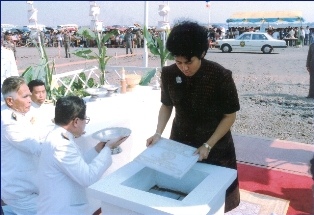
The
Japanese government enthusiastically Japanese studies at Thammasat
University by a grant of baht 115 million for the construction of
the Japanese Studies Center Complex at Rangsit Centes at Thammasat
University in Pathum Thani Province, about 25 km. North of the
Bangkok Airport. The Japanese Studies Center Complex is a classical
Japanese styled building with facilities for research as well as
teaching activities including an auditorium, language lab,
audiovisual room, seminar rooms, researcher rooms, offices for
administrative staff, and 30 twin-bed rooms to be used as hostel.
Her Royal Highness Princess Mahachakri Sirindhorn graciously laid
the foundation stone of the Japanese Studies Center Complex on March
17, 1985. When completed one year later, this Japanese Studies
Center Complex became the head office of the Institute of East Asian
Studies of Thammasat University, and while the research and other
academic activities of the Institute have been broadened beyond
Japan, Japanese studies are still by far the largest activities of
the Institute.
In the earlier
years, the IEAS had some difficulties in promoting Japanese studies
because of the lack of funds. From 1986, However, the IEAS had
received its first of the 5-year inclusive grants from the Japan
Foundation to conduct and carry out several activities of the
Center. During this first phase of the assistance from the Japan
Foundation (1986-1990), the IEAS succeeded in promoting
interdisciplinary academic activities in the research area. The
administration of the Center during this period was also
interdisciplinary where scholars from various faculties inside
Thammasat University as well as outside were drawn into several
committees of the Center. Overall, the academic and other activities
of the information Center included Japanese language teaching,
research, seminars, library and information services, cultural,
academic exchanges, and publication services which included the
Thai-Japanese Monitoring Newsletter, the Journal of Japanese
Studies, and occasional books and monographs on or concerning Japan
and other countries in East Asia.
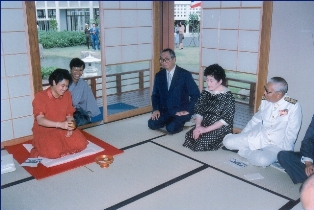
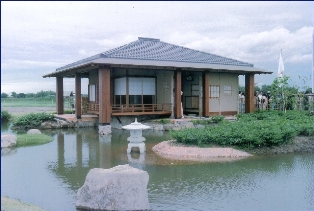 |
|
|
